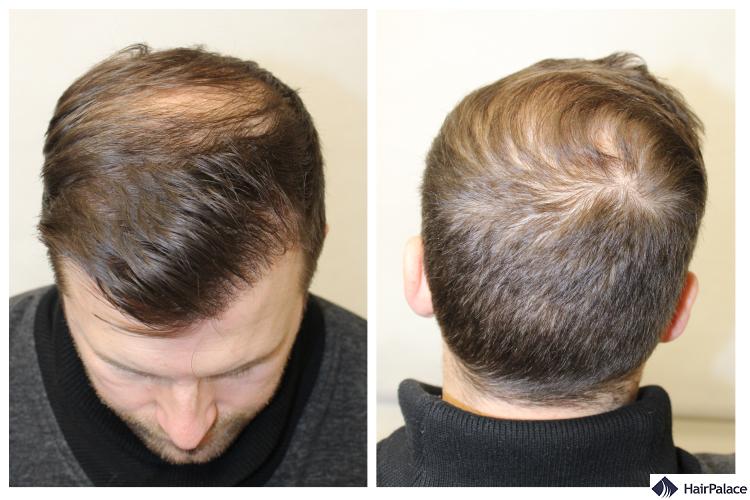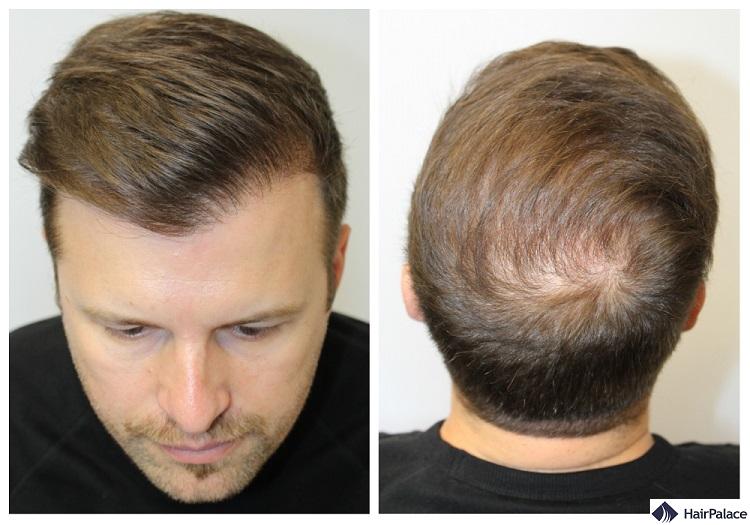Two Hair Transplants, 12 000 Hairs, a Brand New Look – Peter’s Hair Transplant
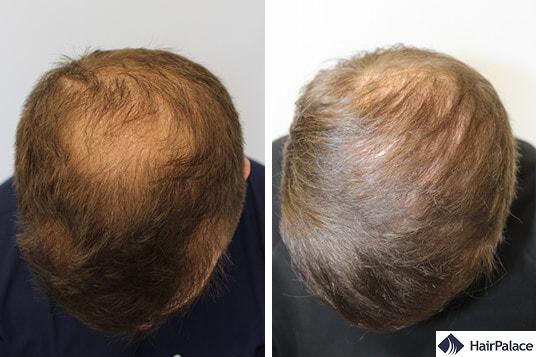
- Peter’s FUE2 hair transplant
- Dos and don’ts after the hair transplant
- The first weeks after the surgery
- Check-ups 3 weeks and 3 months after the surgery
- One year after the hair transplant
- The second consultation and hair transplant
Peter first contacted us in the spring of 2015.
He explained that he had been unhappy with the density of his hair at the hairline and the crown area. To assess his needs and options for a hair restoration, we invited him to an in-person consultation.
During the 15-20 minute examination we determined the number of hairs he needed for the result he expected and we prepared him a treatment plan tailored to his needs. We proposed him 7000 hairs to achieve the perfect hair transplant result.
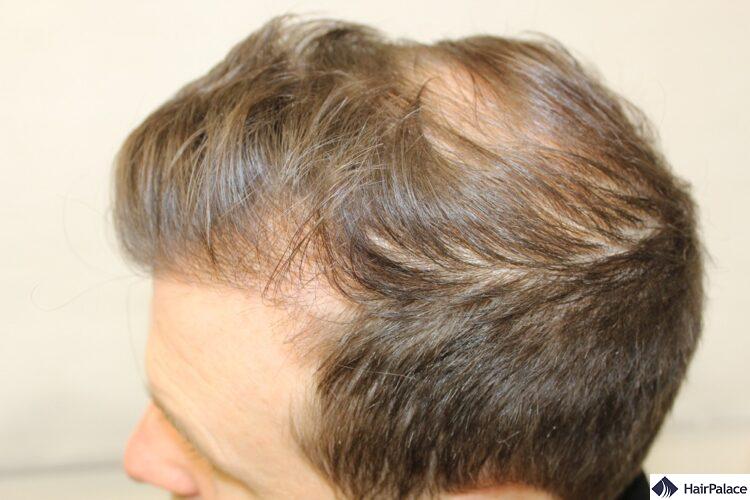
Before the surgery we asked him to send us a blood report. The doctors need to check a couple test results so we can prevent complications during the procedure.
Peter arranged the blood tests on his own, but our colleagues are happy to help and book you an appointment with our partner laboratory if you prefer.
Peter’s blood report came back perfect. We asked him to avoid using hair styling products (gels, mousse, hair spray) taking Vitamin-D, drinking alcohol and smoking in the 2 days prior to the surgery.
Peter’s FUE2 hair transplant
We carried out his surgery on the 19th of May at our clinic in Budapest under Lechner Ödön fasor 3.
We use the FUE2 (follicular unit extraction) hair transplant method which is the most modern and the most effective solution currently.
Instead of removing strips of the scalp to extract the hairs, with this technique we harvest the follicular units one by one.
The hairs are extracted from the back of the head – after cleaning them properly, we implant them to the areas affected by hair loss.
During the surgery Peter received local anaesthesia then we extracted the hairs with a drill ending in a special, very fine needle.
Then, the hairs were put in their new place in the thinned out areas with an even finer needle.
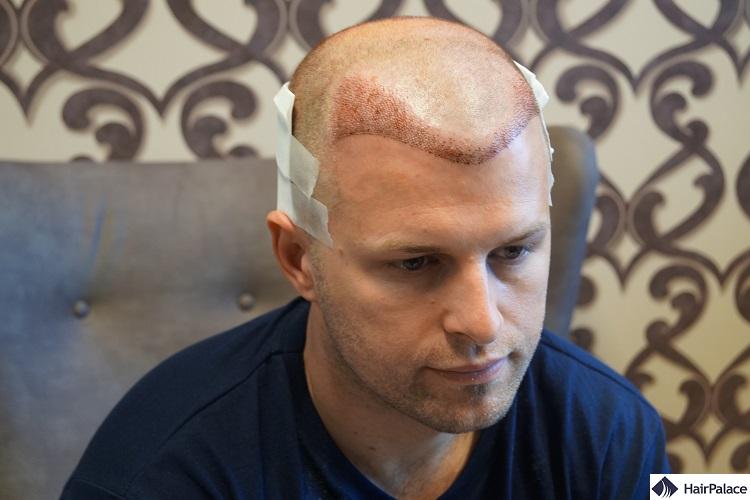
In total, we transplanted 7014 hairs during the 2-day procedure.
Peter took the surgery well and left the clinic satisfied with the experience.
Dos and don’ts after the hair transplant
A few hours after the hair transplant, patients must remove the bandage from the donor area.
They must start using the sterile saline solution too – a couple sprays every hour during the day to keep the implanted area hydrated.
It’s crucial to let the healing go undisturbed, so the implanted hairs can anchor in.
We informed Peter too that before the surgery that he cannot touch or rub the freshly implanted area for the first post-op week.
In addition, we asked him to inform us if he would like to use any products not approved by the clinic (e.g. aloe vera gel, skin repairing creams)
While these products can help accelerate surface healing, they are not recommended in all cases.
The result of the hair transplant takes months to fully evolve; as such, we follow the patient’s healing and the growth of the new hairs for a year after the surgery.
The first weeks after the surgery
Peter had his first check-up a week after the procedure.
We found everything in order; he followed our instructions carefully, so there was no inflammation or infection.
At this point, the scabs are still on the scalp, however, from day 7 patients must start soaking them off the implanted area.
It is best to soak the scalp carefully in lukewarm water for 15-20 minutes, before applying a gentle massage to remove the softened scabs.
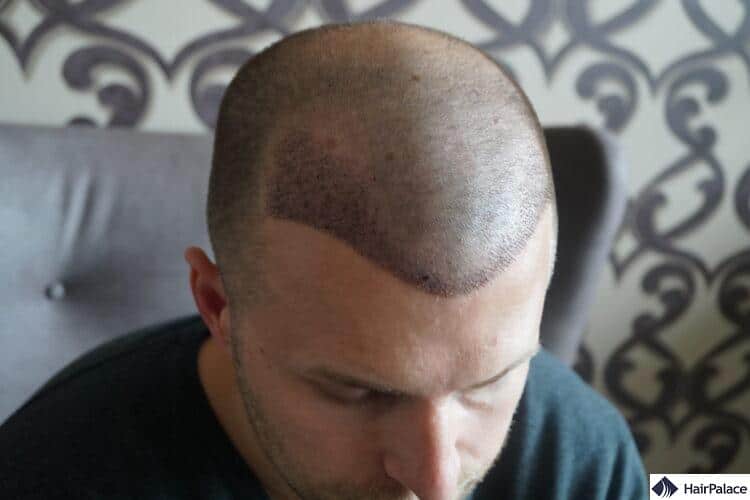
Using shampoo in the first 2 weeks might cause irritation; consequently, patients may start using baby shampoo from the 3rd post-op week.
Check-ups 3 weeks and 3 months after the surgery
Three weeks after the hair transplant Peter’s scalp was in great condition, he removed all scabs properly.
The implanted hairs have started to fall out, but he had no reason to worry – most patients go through this process. The hair strands fall out at this point because the implanted roots enter the resting phase of the growth cycle.
We had the next check-up with Peter 3 months after his treatment.
We saw nice regrowth on the implanted area and Peter was happy with the improvement too.
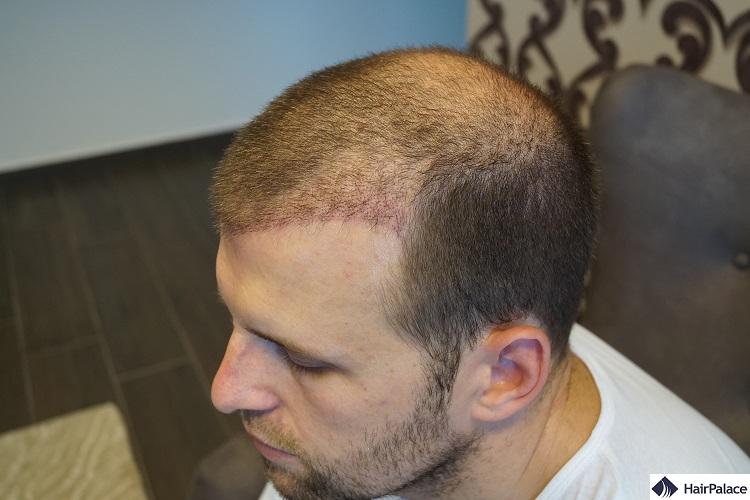
One year after the hair transplant
We guarantee the success of the surgeries, so if less than 80% of the implanted hairs grow back in 15 months, we reimplant the missing amount free of charge.
Peter had his 1-year check-up on the 21st of June 2016.
The implanted hairs have grown out perfectly, just as planned and Peter achieved a great result.
We examined both the donor and the implanted areas again, making sure that his scalp healed properly.
We took photos this time as well to document his condition and Peter was happy to take a closer look at his hair before and after the hair transplant. He noted that later on he would like to return to further increase the density at the crown area.
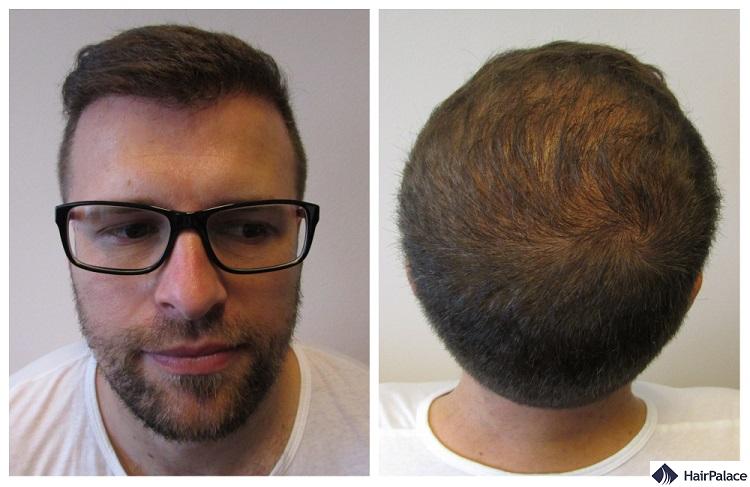
The second consultation and hair transplant
A few years later, in January 2019, we welcomed Peter back at the clinic to discuss his second hair transplant.
The consultation went smoothly, we discussed and marked the area he wished to treat and we determined the number of hairs he needed.
We scheduled Peter second FUE2 hair transplant to the 6th of February.
This session took 2 days to complete – this way we could ensure the comfort of our patient while we implanted a larger number of hairs.
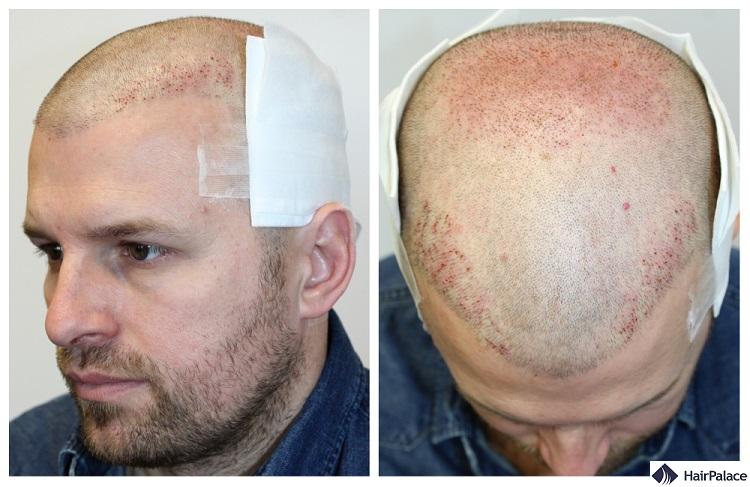
We used local anaesthesia this time too, so Peter didn’t experience any discomfort during the surgery.
We implanted 4646 hairs to the crown, and improved the triangles on the sides of the hairline with 450 hairs.
Through his check-ups we made sure that Peter’s healing goes well.
Fewer scabs formed on the scalp after the surgery, since we transplanted fewer hairs than the first time.
The density started to visibly improve at the 4-month mark and on the 10th of February 2020 we were happy to see Peter again with a brand new look.
He told us he is rather satisfied with his thicker mane and thanked the team for the great work.
Let’s take a look at Peter’s transformation:
